
Social media activism is directly related to democracy in a very powerful way. Democracy invokes the importance of the masses in making political decisions. Social media’s power within the activism world comes from its ability to connect people from all over the country, or even all over the world. Social media brings the masses together. However, the problem with social media activism, as I have outlined in my previous posts, is that people choose to share a link or like an Instagram, rather than get up and actually participate in a demonstration. In order for social media activism’s power to truly be shown, it’s participants must participate in real life and not just on social media. So the question is: What would this look like? How big of an impact could we have on social issues if our online participation translated to real life participation?

Hahrie Han, a Political Science professor at UC Barbara, has researched the shifting model in which civic groups derive their power. Han argues that recent social change is fueled more by “transactional” than “transformative” forms of organization. This transactional organization is exactly what is inhibiting social media from creating real social change. Han explains that transactional organization, which social media relies heavily on, asks participants to do stuff: share a post, create a hashtag, sign a petition, donte money, etc. While this kind of participation is crucial for spreading awareness, it does not cause the participants to have a deeper engagement with the cause. This deep engagement comes with transformative processes. Transformative processes ask participants to become leaders and organize in-person events. Research shows that in-person events are essential for creating social bonds and creating an environment conducive to reaching a certain goal.
The resignation of The University of Missouri’s president Tim Wolfe was a direct result of transformative student efforts. This event is a perfect example of what it looks like when people actively participate in creating social change. Students, faculty, and community members participated in demonstrations protesting the administrators handling of racism on campus. These efforts were brought to the forefront when thirty-two members of the football team vowed to not participate in any football-related activities until the president resigned. The threat of the University of Missouri losing millions of dollars due to the lack of participation in football caused the President to resign and activists all over the country rejoiced with the members of Missouri. The University of Missouri’s students and faculty did not just share a hashtag or like a post, the participated in real demonstrations and sacrificed their college careers in order to create social change.
-Erin K.
 joining in on the movement even President Obama joined in. The social media movement for ALS brought in over 100 million dollars to the ALS Association, which is a great improvement compared to 2013 which was 23.5 million. Therefore it is easy to look at this social media “movement” as a success.
joining in on the movement even President Obama joined in. The social media movement for ALS brought in over 100 million dollars to the ALS Association, which is a great improvement compared to 2013 which was 23.5 million. Therefore it is easy to look at this social media “movement” as a success.
 ice bucket challenge was not seen as a proper way of activism. By essentially awarding the individual who dumped ice water on themselves, meant that they were not contributing to the ALS association. Also the article discussed how once the ice bucket challenge was no longer seen as a trending topic online the donations had a significant decrease. Also when people were doing the ice bucket challenge many of the participants did not even mention that it was linked to ALS, but rather doing it for thesocial media aspect. The ice bucket challenge can be viewed as a social media movement that helped to raise a great deal of money for an association, however since social media is such a fast paced network, users are always looking for the next fad to get hooked on. Therefore once the ice bucket challenge was no longer popular users no longer cared about the ALS ice bucket challenge.
ice bucket challenge was not seen as a proper way of activism. By essentially awarding the individual who dumped ice water on themselves, meant that they were not contributing to the ALS association. Also the article discussed how once the ice bucket challenge was no longer seen as a trending topic online the donations had a significant decrease. Also when people were doing the ice bucket challenge many of the participants did not even mention that it was linked to ALS, but rather doing it for thesocial media aspect. The ice bucket challenge can be viewed as a social media movement that helped to raise a great deal of money for an association, however since social media is such a fast paced network, users are always looking for the next fad to get hooked on. Therefore once the ice bucket challenge was no longer popular users no longer cared about the ALS ice bucket challenge.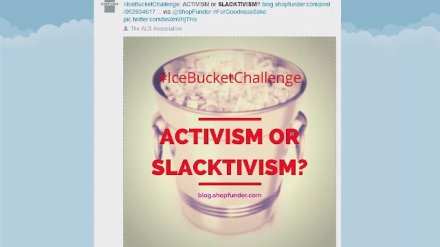


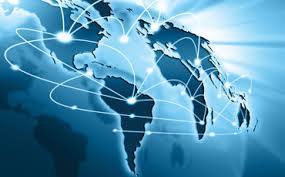 e change. As with most other things, there are critics of social media activism, and rightly so. A major argument is that while hashtag movements and social media increase awareness, often significantly, it does not help to find the root causes of the problem, nor the root solution. For example the topic of my previous post, #BringBackOurGirls. People globally were aware of the problem and calling for actions, yet a year and a half later and hundreds of girls are still missing.
e change. As with most other things, there are critics of social media activism, and rightly so. A major argument is that while hashtag movements and social media increase awareness, often significantly, it does not help to find the root causes of the problem, nor the root solution. For example the topic of my previous post, #BringBackOurGirls. People globally were aware of the problem and calling for actions, yet a year and a half later and hundreds of girls are still missing.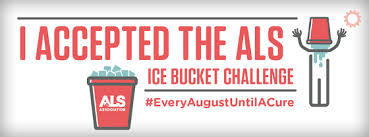 just $10 to help fund research, or help pay for medical bills for those with the disease who can’t afford the extensive treatment. 17 million people participated, which would have resulted in over $170 million dollars for the cause, in just a few months. At that rate, we could cure hundreds of diseases in the next few years. Right now, people believe that they are just one small person, and therefore can’t make a difference. I do not believe this to be true, and if we got every person in the world who participates in social media activism not to believe it either, we could be seeing an entirely different world.
just $10 to help fund research, or help pay for medical bills for those with the disease who can’t afford the extensive treatment. 17 million people participated, which would have resulted in over $170 million dollars for the cause, in just a few months. At that rate, we could cure hundreds of diseases in the next few years. Right now, people believe that they are just one small person, and therefore can’t make a difference. I do not believe this to be true, and if we got every person in the world who participates in social media activism not to believe it either, we could be seeing an entirely different world. LM
LM over four millions tweets contained the hashtag, hoping to spread awareness and get governments to take action in order to find these missing girls. Celebrities, politicians, and everyday people all were tweeting furiously to spread the news. Even First Lady Michelle Obama joined; her tweet alone generating over 57,000 retweets. Celebrities such as Kim Kardashian, Kerry Washington, Justin Timberlake, Bradley Cooper and countless other celebrities tweeted and instagrammed showing their
over four millions tweets contained the hashtag, hoping to spread awareness and get governments to take action in order to find these missing girls. Celebrities, politicians, and everyday people all were tweeting furiously to spread the news. Even First Lady Michelle Obama joined; her tweet alone generating over 57,000 retweets. Celebrities such as Kim Kardashian, Kerry Washington, Justin Timberlake, Bradley Cooper and countless other celebrities tweeted and instagrammed showing their 
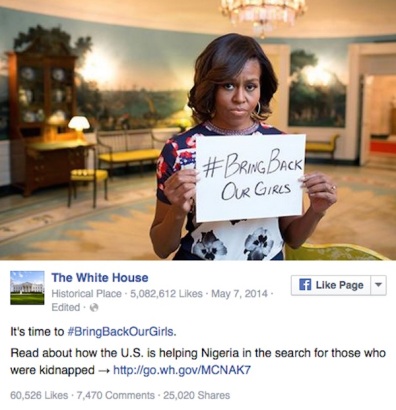 because they wanted an education. The Facebook page has links to the website which gives further information about the kidnapping and is still promoting the hashtag. Michelle Obama became a significant figure in The Bring Back our Girls campaign and is seen on the Facebook page holding a sign that says “#BringBackOurGirls.” The hashtag Bring Back our Girls also brought a lot of attention
because they wanted an education. The Facebook page has links to the website which gives further information about the kidnapping and is still promoting the hashtag. Michelle Obama became a significant figure in The Bring Back our Girls campaign and is seen on the Facebook page holding a sign that says “#BringBackOurGirls.” The hashtag Bring Back our Girls also brought a lot of attention 

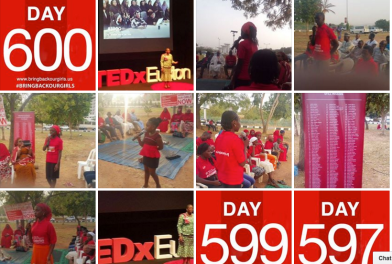 and the rescue of the 300 school girls that were kidnapped. Starting now, let us march on social media.” They also asked for users to post the petition to their Facebook wall to help spread the word and get people on board. Facebook’s main tool for the campaign was to democratize celebrities to raise awareness to U.S. citizens to get involved. This issue was seen to be very significant on Facebook by raising awareness through the use of
and the rescue of the 300 school girls that were kidnapped. Starting now, let us march on social media.” They also asked for users to post the petition to their Facebook wall to help spread the word and get people on board. Facebook’s main tool for the campaign was to democratize celebrities to raise awareness to U.S. citizens to get involved. This issue was seen to be very significant on Facebook by raising awareness through the use of 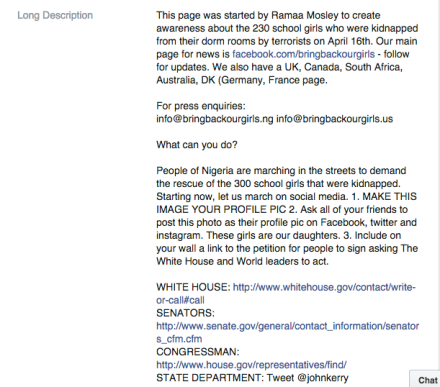
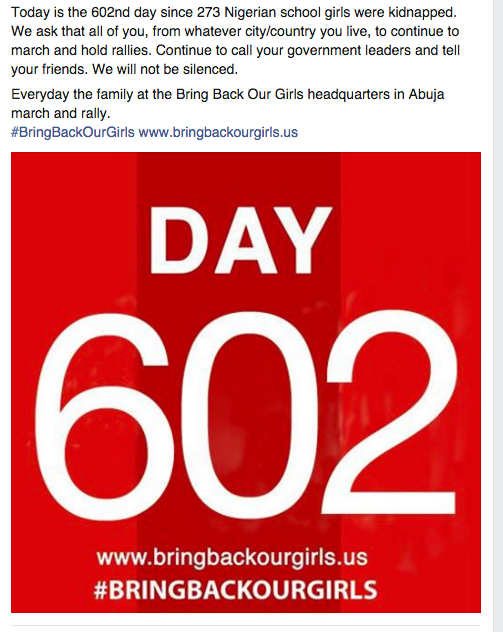
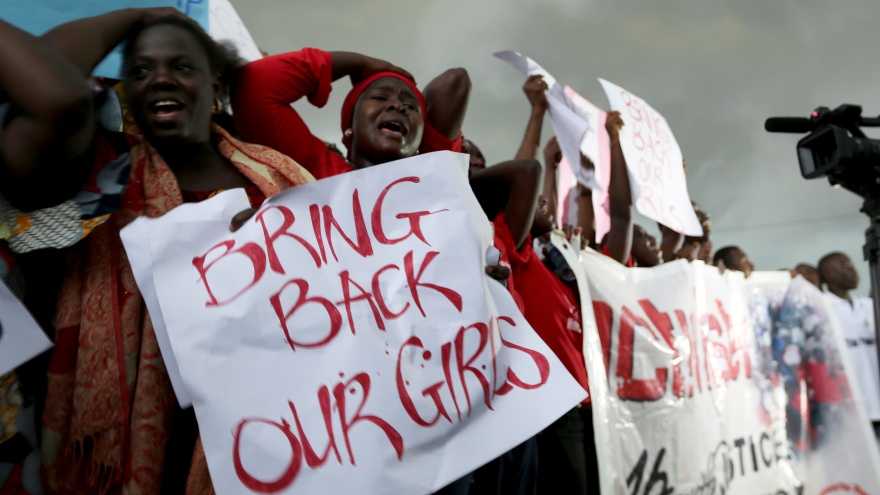
 ver, the potential of social media activism is growing especially when looking at issues from
ver, the potential of social media activism is growing especially when looking at issues from shifted to social media as a new form of communication. “Resource mobilization theory makes clear that both the availability of resources and actors’ efficacy in using them effectively are essential.
shifted to social media as a new form of communication. “Resource mobilization theory makes clear that both the availability of resources and actors’ efficacy in using them effectively are essential.
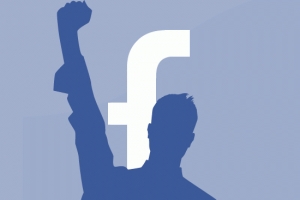 Facebook along with Twitter and Instagram. This allows users to connect with one another through sharing similar stories and posts by hashtagging their experiences. In Black Lives Matter it has been seen as a very useful tool for gathering protests as well as sharing updates from the events. There are also several Black Lives Matter groups based on states to keep
Facebook along with Twitter and Instagram. This allows users to connect with one another through sharing similar stories and posts by hashtagging their experiences. In Black Lives Matter it has been seen as a very useful tool for gathering protests as well as sharing updates from the events. There are also several Black Lives Matter groups based on states to keep how social media is continuing to grow rapidly making it a new public space. Facebook allows for all users to feel empowered about discussing their opinions on different issues. This is especially seen through our youth mainly in the
how social media is continuing to grow rapidly making it a new public space. Facebook allows for all users to feel empowered about discussing their opinions on different issues. This is especially seen through our youth mainly in the 
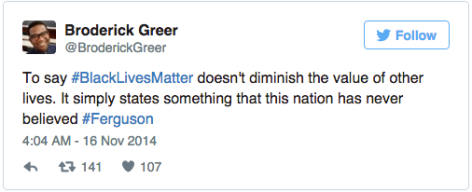
 The use of the hash tag #BlackLivesMatter was one of the, if not the principal reason why their ideas were able to spread so fast across our nation, and even the globe. Though it moved from Twitter to all other platforms, and a social media movement to one IRL, the use of the hash tag on Twitter put this movement on the
The use of the hash tag #BlackLivesMatter was one of the, if not the principal reason why their ideas were able to spread so fast across our nation, and even the globe. Though it moved from Twitter to all other platforms, and a social media movement to one IRL, the use of the hash tag on Twitter put this movement on the 
 orderly conduct and resisting arrest.
orderly conduct and resisting arrest.

